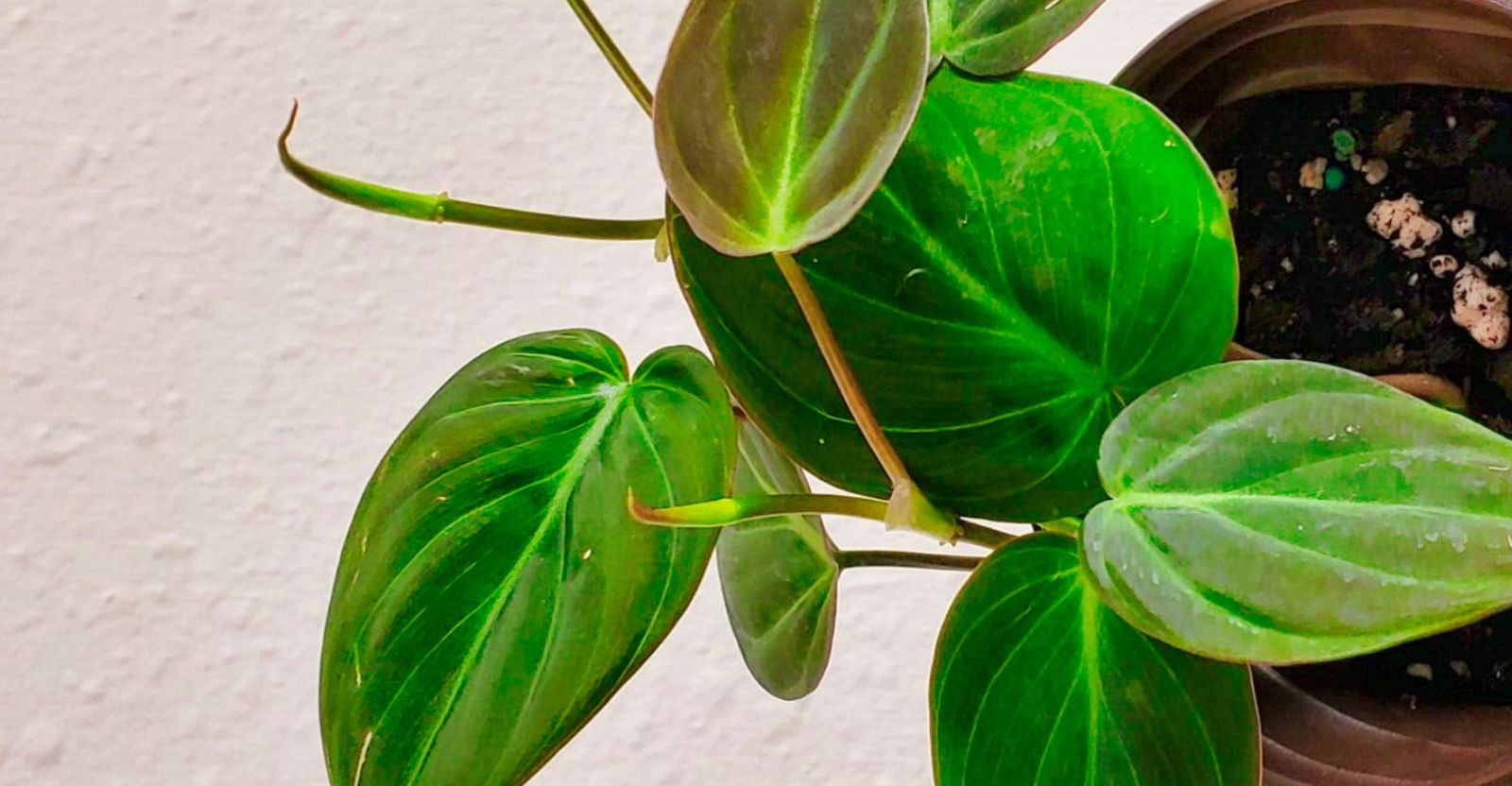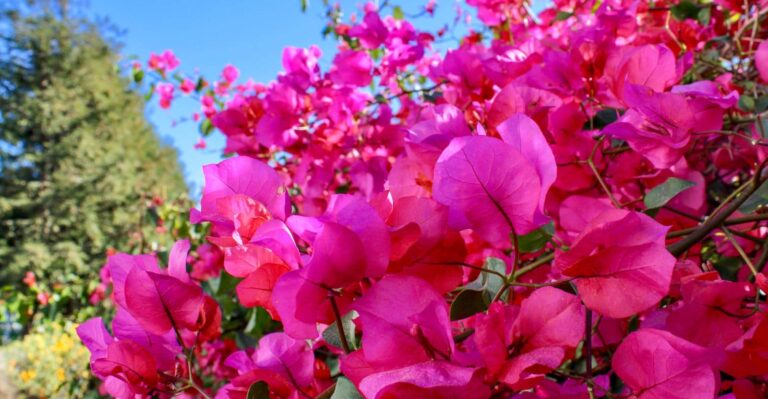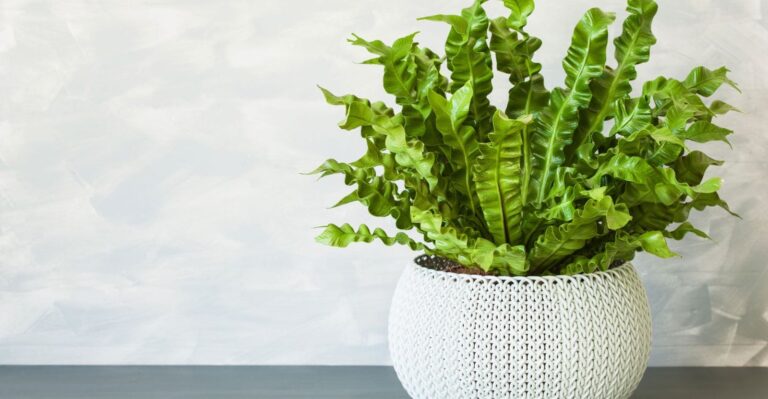Amazon has put together some great Home Gift Deals – save money and get your shopping done at the comfort of your home! Click here to see deals on Amazon
Gardeners are always looking for new houseplants to add to their collection. The philodendron micans is one of the most exotic and easy-growing plants in your home.
What makes it a favorite?
It’s easy to grow, beautiful, and will help purify the air. The small size beautiful plant can be placed almost anywhere in your home. Its unique frilly leaves give it a tropical feel that will give your living room or bedroom an exotic look.
Does it make you interested in growing this plant into your home?
Keep reading on how to get started and take care of this gorgeous heart leaf philodendron plant.
What is a philodendron micans?
Philodendron micans are also known as Velvet leaf philodendron. It’s a large genus of plants in the Araceae family. Philodendron means tree lover in Latin, and its species are herbaceous tree-climbing vines.
These are vine-like plant that is native to the jungles of Central America. It’s most commonly seen in its domesticated form as a house plant. It’s also one of the most popular indoor plants since it’s relatively easy to grow up to six feet tall.
The velvety leaves micans are stunning houseplants known for their dark green heart-shaped leaves and their beautiful red swirls. You can recognize micans by their cordate leaves with velvet bronze on the upper surface and reddish to bronze on the lower surface.
These are popular ornamental foliage plants that are grown as either hanging baskets or potted plants. The P. micans are vining types of plants supported by totem poles or use another plant to climb, same as philodendron hederaceum.
P.Micans is similar to heartleaf philodendron that rarely flowers in nature. There are many philodendron varieties, and they’re often named by their coloration or their location of origin.
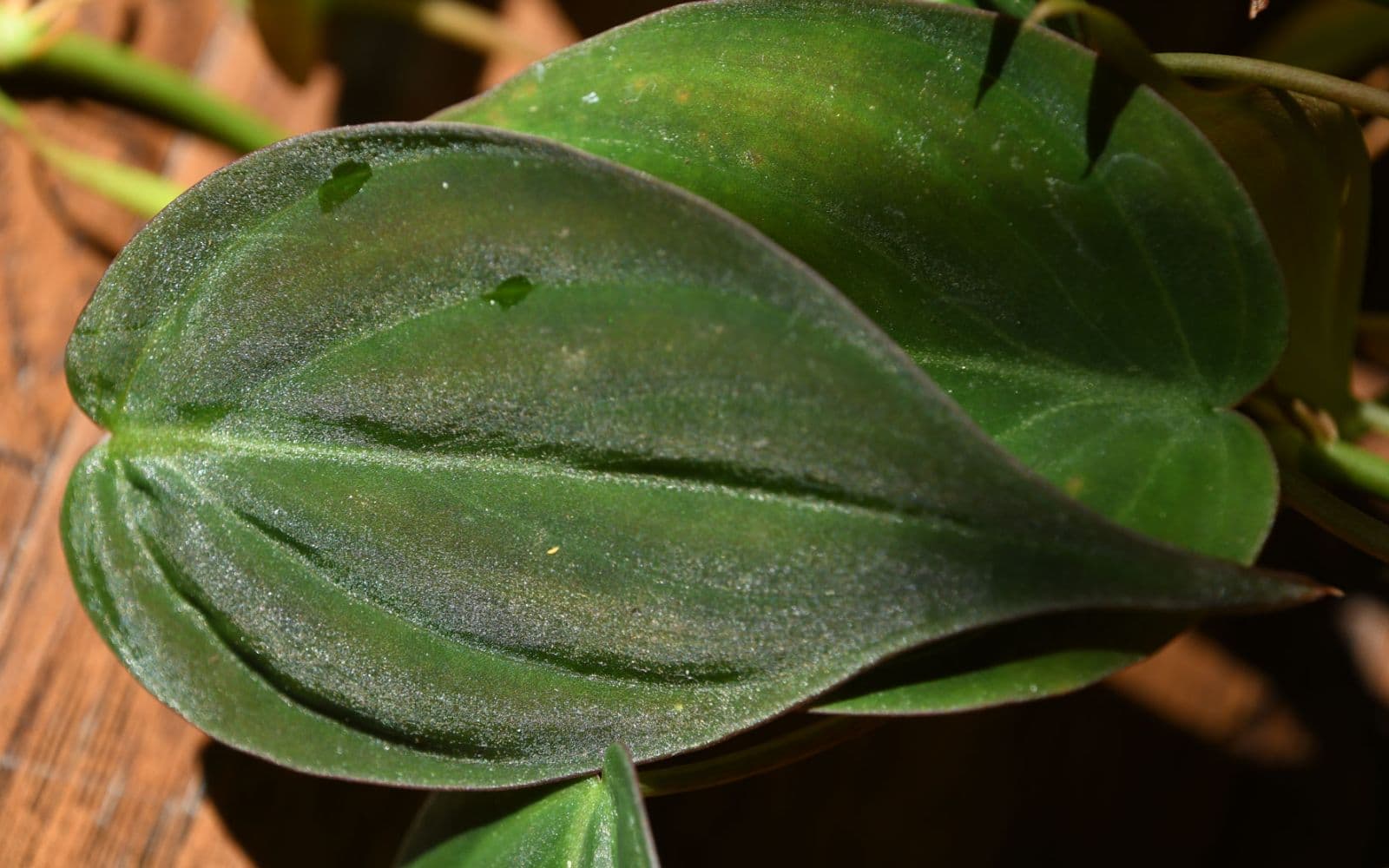
How long can a philodendron live?
The question of how long it can live depends on the species. Different philodendron species have different average lifespans. With proper care, the average Philodendron can live over 50 to 75 years.
In the book “Odyssey Book of Houseplants,” the author had a philodendron plant that his grandmother brought from England over 50 years ago. The plant’s long life can be because of its ability to tolerate dry indoor air better than most other houseplants.
What is the difference between a pothos and a philodendron?
Pothos, philodendrons, and hundreds of other plants belong to the botanical family Araceae or arums. If you’re looking to buy one of these plants, you should know that they’re different species of a large genus of tropical vines.
You can tell the difference between pothos and philodendrons by carefully looking at their leaves. pothos leaves are large, thick, and waxier whereas Philodendron mican has thinner heart-shaped leaves and has a soft texture to them.
Moreover, Philodendron leaves are fuzzier than the pothos, and the veins will spiral up to the leaf blade.
Pothos roots are wider and straight, whereas philodendron has thinner and long elongated rot. Another key difference is in both plants’ petiole, the small stalk that joins leave to the stem.
Pothos petiole has a slight indentation and isn’t fully round. Philodendron’s petiole is dark green with uniform roundness to it.
Is Cebu blue a pothos or philodendron?
Cebu blue is a low-light plant with big, heart-shaped leaves. But is it a philodendron or a pothos? It turns out there’s some debate over its true identity.
Still, the consensus is that it’s a pothos, most closely related to the heart-leafed pothos “Epipremnum aureum.”
Other sources say it’s a philodendron related to the heart leafed Monstera deliciosa or the chain leafed P. Selloum.
But there is no widespread support for Cebu blue to be a philodendron, and experts and the gardening community believe that Cebu blue is a pothos.
Plant growing summary:
| Factor | Growth Condition |
|---|---|
| Soil | Moist soil |
| Water | Lightly water when the top layer of soil gets dry |
| Sunlight | Bright indirect light |
| Temperature | 65°-75ºF (18.3° -23.9ºC) |
| Fertilizer | Half strength 20-20-20 (Spring and Summer) |
| Propagation | Stem and leaf cutting |
| USDA Zone | 9-11 |
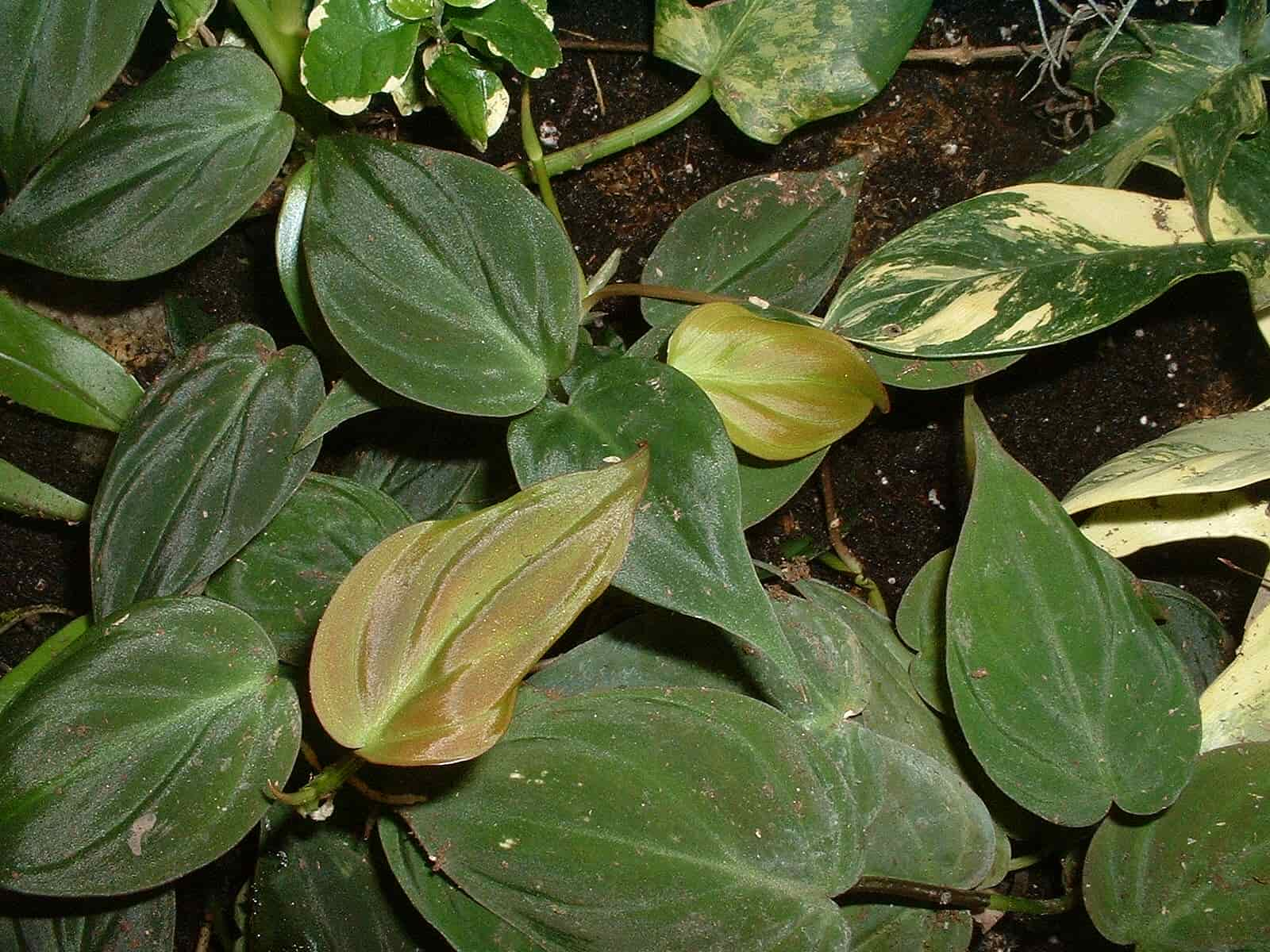
How to propagate philodendron micans?
It’s a perennial plant that can be easily propagated to get more plants. Over time, your velvet leaf philodendron may outgrow its spot in the hanging basket. You can prevent the plant’s demise by learning how to propagate it correctly.
A common technique for propagation can be done using stem cutting or leaf cuttings. The process of propagation is relatively simple. When you’re ready to take the plunge, there are a few things you need to know.
If you want to propagate it through stem or leaf cuttings, make sure you have sterilized the pruner or trimming scissors. This prevents the new growth from becoming infected and increases the chance of healthy aerial roots propagation.
When you’re ready, the first thing you need to do is choose the plant you want to take a cutting from. You may want to think about taking a cutting from the healthiest plant in the room.
After you have selected the plant, cut the plant that is approximately 4 to 6 inches long and has at least two nodes in it.
The nodes are the thick ring on the plant where new roots will grow. If there are multiple leaves, remove all the leaves from the cutting’s bottom inch so that you’re only left with leaves on the top part of the cutting. The next thing you need to do is dip the lower inch of the cutting in a rooting hormone.
You place the cutting in a clear glass jar so you can monitor the root development. You can also directly plant it in moist soil with sphagnum moss.
It usually takes 15 to 20 days for the new roots to start growing. If you have rooted it in the water, you can transplant it into the soil for more robust growth.
Can you propagate Philodendron from a leaf?
Yes, you can also propagate Philodendron from a leaf. The propagation from a leaf is similar to stem cutting. You need to pick a healthy, strong-looking leaf that is fresh, green, and has some firmness to it. Make sure that the leaf has a well-defined stem and isn’t too big.
You can dip the leaf petiole in a rooting hormone (optional step). Prepare slightly moist soil and drop the petiole in the ground. Keep the leaf on top of the surface and place it where it can get some indirect sunlight.
In a couple of weeks, you will find the leaves to start rooting that you can transplant into a bigger pot.
How to care for philodendron micans
Caring for philodendron micans is quite simple, but there are a few key issues to remember if you want it to thrive.
Soil
Philodendron requires moist soil with a coarser mix of perlite or sand to help with the drainage and aerate the roots as much as possible.
You should use a pot with a bottom hole at it that helps drain excess water. You shouldn’t overwater the soil as it increases the risk of root rot or soil fungus development that destroys the plant.
Don’t make ground soggy, and keep it well-aerated so roots can get oxygen from the air.
Watering
Philodendron is a tropical plant and needs regular moisture to help it grow. But it’s a vine plant that means it doesn’t like sitting in a water pool. You can lightly water the plant once or twice weekly.
Be restrained when it comes to watering your Philodendron. Only water it when the few inches above the soil has become dry.
If you’re not sure, insert your finger in the soil and check if it’s dry inside. When you’re ready to water, make sure to water entirely so that the excess water runs out the bottom drain hole.
This makes the soil get fully moisturized that helps the root to get proper nutrients. During the winter months, you can reduce the watering frequency and maybe water once every other week. The key is to let the soil gets dry before you water it again.
Does Philodendron micans like humidity?
Philodendron plants such as philodendron micans and philodendron scandens thrive in 40-50% humidity and moderate temperature.
Like any other plant, the right amount of humidity is crucial for its survival. But the amount that’s “right” is tricky to get right. After all, too much moisture can lead to plants developing mold or fungus.
How do you fix an overwatered philodendron?
If you’ve been a gardener for a very long, you’ve probably experienced the wrath of an over-watered plant. Philodendrons are hardy plants, but they’re also the easiest houseplants to kill if you don’t know how to water them.
The good news is that you can work to salvage it once you realize that you’ve overwatered it. The first thing you need to do is to stop watering it anymore. Check if the pot drainage hole isn’t blocked and remove the soil a little bit to let the excess water drain.
Check the roots for any sign of rot or fungus developing in the soil. Place the plant at a location where it can get some indirect sunlight.
Remove any dead or brown leaves. Move the ground around to create some space to let air reach to roots.
You may find repotting in a new healthy moist soil could be the best option to salvage it.
Fertilizing
The process of plant fertilization is to stimulates growth. There are two ways to fertilize the plant; you can use chemicals or do it naturally. The method you choose is up to you.
The best way is to provide natural fertilization, such as using compost or organic matter. If you want to fertilize it chemically, you should use a mild dose of rounded 20-20-20 fertilizer when it starts growing.
You can fertilize it lightly once every 4 to 6 weeks. During winter, you don’t need to fertilize, and it goes into a semi-dormant mode.
Should you fertilize a philodendron?
You can have healthy philodendron growth without fertilization as long as the soil is rich in nutrients from organic matter.
But if your plant is weak and getting yellow leaves, fertilization is the best way to give them a boost. You can feed it once every month in the spring and summer with diluted half-strength fertilizer.
Sunlight
Lighting is an essential factor in the growth of a micans. Simultaneously, the soil should be kept slightly moist. They need to be in an area that is well lit with bright indirect light, such as sunny windows.
You may grow it in a planter and place it in a sunny, south-facing window or even grow them outdoor where it gets bright light. The best temperature to grow it’s between 65°-75ºF (18.3° -23.9ºC).
If you’re planting it outdoor as a potted plant, bring it inside if the temperature drops. It won’t grow well in temperatures below 50 degrees Fahrenheit.
Pruning
Pruning a philodendron is a great way to shape and control its growth. These are tropical plants that grow in trees and other vegetation, so they enjoy filtered light and humidity levels higher than normal indoor plant levels.
Pruning them to keep them small lets you place them in more areas of your home and gives them the space they need to get enough food and nutrients.
Should you trim your Philodendron?
If your Philodendron appears to be outgrowing its space, consider trimming it. P. micans are fast growers that tend to get a big leggy as they mature.
While they can be top-pruned into a tree-like shape, trimming can also rejuvenate an older plant or keep a new plant from leggy.

How do you make a philodendron fuller?
There are many more philodendrons evergreen climber varieties to choose from than there were a decade ago. Many are quite beautiful and routine pruning helps encourage the growth of leaves and foliage of Philodendron.
Pruning old and wilting brown leaves gives it more room to grow. The key is to think about the flow of energy in your plant. If you find the soil lacks the nutrients for a rich growth, add some fertilizers once or twice a month.
Place the plant in a well-lit place where it looks denser and greener. The sunlight also helps leaves create more food for the plant, helping it grow new leaves and make them look fuller. Check the soil, and don’t let the plant go without water for too long.
Why are your Philodendron leaves yellow?
Yellowing leaves in the Philodendron can be a sign of a few different problems in your plant. The main reason behind yellowing is a change in the leaf metabolism or a deficiency of chlorophyll. The green chlorophyll pigment allows plants to convert sunlight to food.
The yellow is the result of the fading green pigments, which happen when the plant isn’t healthy. Overwatering and underwater, including exposure to direct sunlight, is the leading cause.
Many people tend to overwater their Philodendron than underwater it. If you’re watering too much, the plant gets waterlogged, and the soil stays wet for too long. It causes the leaves to turn yellow. This is especially true if the plant is in a pot without a drainage hole.
Also, if you’re fertilizing it too often, it causes the leaves to lose their green color. You should fertilize it once every other month. Check for pest infestation such as mealybugs, spider mites, and aphids and use a proper insecticide to treat the plant.
Is Philodendron Micans toxic to pets?
Philodendron micans are toxic to pets such as cats and dogs. The plant contains calcium oxalate crystals that are often found in the Araceae family plants. When pets chew or bite into plants, it releases these crystals that irritate pets.
It’s mildly toxic, and you should watch for symptoms such as drooling, vomiting, and pawning at the mouth of pets. If the condition gets severe, you should take your pet to a veterinarian.
Where can you buy a philodendron micans plant?
Although the Philodendron is a popular houseplant, many people don’t know where to purchase one especially rare philodendron micans. You should first check your local garden centers and home improvement stores such as Home Depot, Lowes, and Walmart.
You can also purchase it from nurseries that specialize in plants. The other best place is to buy it from online retailers such as Amazon. You can also read more about another species called Philodendron Gloriosum which is also a very popular indoor plant.
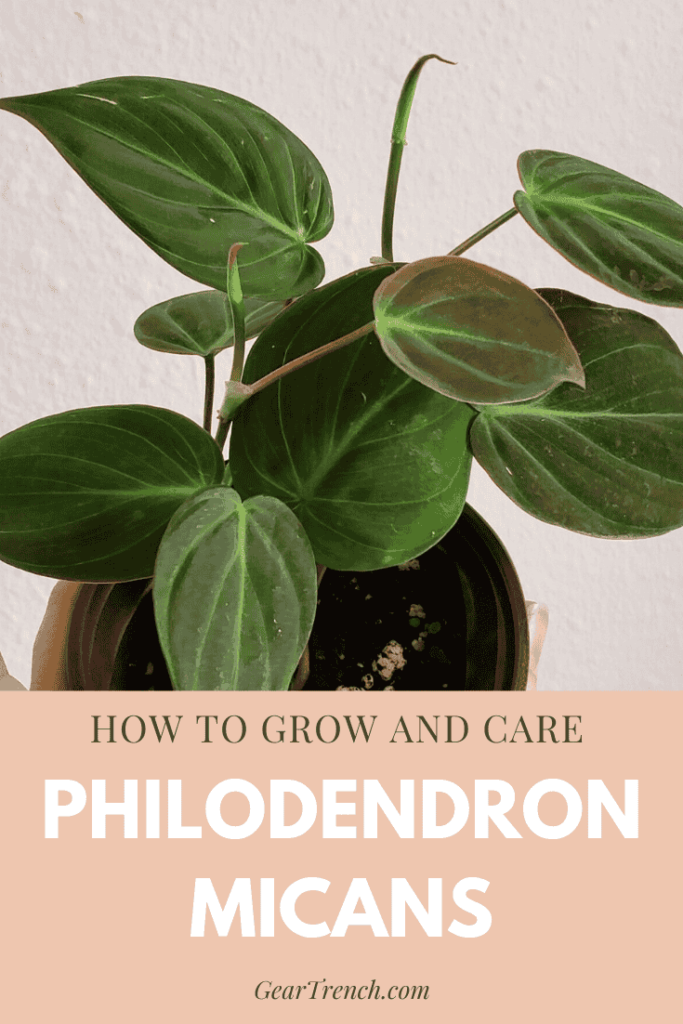
Don’t forget to share this post

